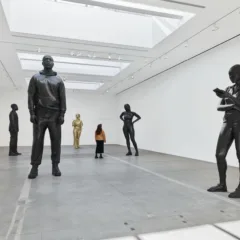Sometimes what artists make that isn’t art is just as interesting as their art.
That’s what I learned from the “Lists: To-dos, Illustrated Inventories, Collected Thoughts and Other Artists’ Enumerations” show at the Morgan Library in New York City, a magnificent yet subtle exhibition of non-art scribblings and scrawlings made by artists, all culled from the Smithsonian’s Archives of American Art.
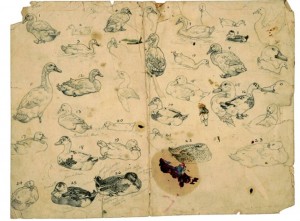
The show contains the actual lists, jotted notes and sketches created by a wide range of artists, including big names like Picasso, Robert Smithson, Hans Hofmann, Franz Kline, Lee Krasner, the de Koonings, as well as equally-interesting work by lesser known folks. The display mimics that of many art shows—the tattered and torn pieces of paper hang squarely in frames or at rest in vitrines—but the exhibition space registers immediately as different from a typical art space. Pieces are smaller, more intimate, and also more mundane. Most works are handwritten, and when typed, visibly written with a typewriter with penciled annotations. All the works retain an intensely personal quality; handwriting, the variety of types of paper, doodle attributes, and even the tools used to make the markings immediately evoke the time periods and personalities of their makers.
The most interesting pieces provide a fuller picture of the life and times of artists whose work may be more familiar to us than their biographies, contexts, or daily routines.
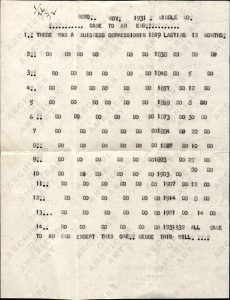
A typed list by Grant Wood, painter of the classic “American Gothic”, features columns containing the start and end dates of all economic depressions ever to have taken place in American history, ending with the Great Depression—the time during which Grant lived and worked. At the bottom of this list, Wood adds, “all [depressions] came to an end except this one, mebbe [sic] this will…”. This desperately hopefully message, and the whole list itself, emphasizes the drastic conditions out of which Wood’s work emerged, breathing new air into the now-staid, iconic characters in his paintings.
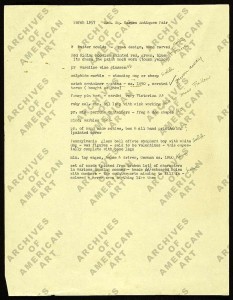
A list by Joseph Cornell inventories second-hand curiosities acquired from an antiques fair, including a “pair of miniature frog and dog shaped perfume containers”—revealing Cornell’s meticulous connection to the relics and knickknacks that would become the stuff of his work.
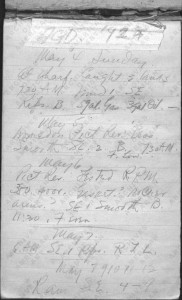
And a list by Arthur Dove records daily weather during his time as a live-aboard on his boat the Mona, documenting the meteorological attentiveness that came to be the trademark of his paintings.
Beyond the words of art historians and biographers, rarely do viewers get access to such poignant and relatable vestiges of the processes and everyday dealings of artists. Seldom do we get to see examples of how our most revered culture figures are in so many ways, “just like us”—hastily hatching plans, scratching out mistakes, noting quotations, worrying about money, buying groceries—desperately and sloppily trying to hold on to our flurries of thoughts and experiences so as to eventually turn them into something more.
—Kaitlin Kylie Pomerantz is a painter, writer, and sustainable agriculturalist based in Philadelphia. Her show “Wish You Were There”, featuring work by herself and seven other Philadelphia artists, is on view now through September at the Green Line Café Lancaster Ave.


